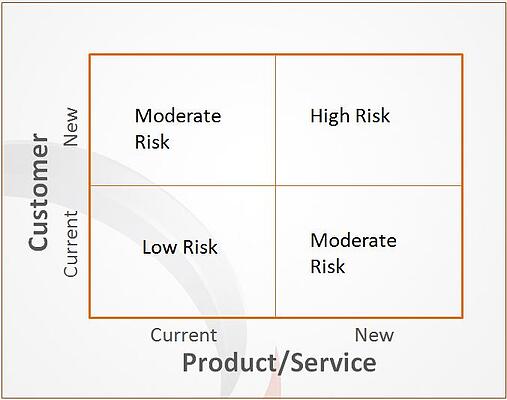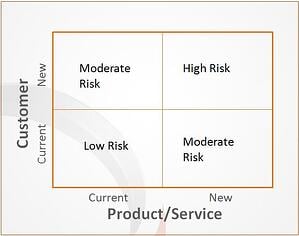CEO Blog - Advice for CEOs on growth and scaling
Small Business Thrashing: When Nimble Makes You Numb

Opportunities Galore…
This small company is 15 years old, and has a few million in sales. The founder has returned from semi-retirement to help lead and reinvigorate the team. In the past year or so, the firm introduced a number of innovative new services, including its first consumer-direct offering. It has also partnered with several adjacent industry players and is leading the effort to capture yet another clear opportunity. The small staff works tirelessly to support every new initiative while keeping the wheels on its core offering that delivers 85% of its revenue. While sales overall are not expanding and no one has received a pay increase in years, there are no complaints. These are good people. And they know the power of working nimbly and collaboratively.
…But Hungering For Growth
Like many of businesses of their size and age, this company hungers for faster, more predictable growth. They are tired of being small when they are part of a market that seems so promising. During our first meeting, it was immediately clear that the company leadership consists of a sharp group of professionals. In our exploratory work session (90 minute complimentary consultation) everyone engaged, all contributing, respectfully listening to new ideas, and adding value to our conversation.
Trying to Do Too Much?
Having an inkling of one of their root causes, we led a discussion around the extensiveness of both their offerings and the range of customers they were serving. We hit the whiteboard and built a matrix with their services down the left column, and their targets across the top row. Then made checks in the intersecting grid to indicate when a product was being sold to a given customer. Before we were done, the whole executive team knew where this was leading. They were trying to serve too many targets with too many incremental services. The look on their faces said, “no wonder we feel spread so thin…we are!”
How to Scale Back, Sharpen Focus
Recognizing the frustration in the room, we moved quickly to add some clarity to their situation. We drew a simple 2x2 matrix that I recall as being a Boston Consulting Group tool, and one we use in our Growth Gears webinar. It summarized their challenges:
- 85% of their revenues were coming from traditional customers with legacy products
- Their new consumer product launch took a new offering to a new customer set; or into the upper right high risk quadrant
- Their new services bundle offered with a new strategic partner also took them into a new customer set, with a new offering and hence into the high risk quadrant
After a short discussion, we all recognized that we needed to solidify things on the home front by tightening our offerings, refreshing our value propositions making sure they have the clarity and relevance that our most important B2B targets need. Then, as a next step, we’d move forward with the new initiative.
Managing Forward – Inc Navigator
After our next meeting we ratified our new direction and were in agreement on how to move forward. We’d tapped some extra management resources to help with the implementation and to reduce the on-going cost of their part-time CMO. We also launched and reviewed the Inc Navigator Compass, a fabulous business alignment diagnostic, to quickly bring management team perspectives, problems and priorities into focus. Moving forward, we’ll be using the Inc Navigator Scoreboard tool (also an inexpensive, SaaS offering) that will manage our prioritized initiatives and actions with a terrific tracking dashboard.
More Focus, Less Thrashing
In a computer, thrashing refers to the situation when the calls for more data from storage are so frequent that the CPU can’t get any work done. The problem is solved by reducing the number of requests and allowing the CPU to process the high priority work. The case study above reminded me of this expression: the executive team, as skilled and motivated as they were, could not get things done because they kept piling new initiatives on their plates.
In summary, a small business should always seek ways to use their nimbleness to their advantage. The challenge is recognizing when being overly opportunistic and responsive jeopardizes market strategy and the ability to execute efficiently. There are some simple ways and means for fleshing out these situations. And for Chief Outsiders, there’s nothing more rewarding than helping an executive team regain its focus and effectiveness.
Topics: Product Strategy, Business Growth Strategy, Market Position
Thu, Nov 15, 2012Featured Chief Outsider
/CMO-Pete-Hayes.jpg?width=200&height=200&name=CMO-Pete-Hayes.jpg)
Pete Hayes
- Press Releases
- Careers
- Case Studies
- Marketing Consultant Company
- Marketing Strategy Consultants
- Marketing Plan Consultants
- B2B Marketing Consultants
- Virtual CMO
- Marketing Consultant Outsourcing
- Fractional CMO
- What is a Fractional CMO
- Healthcare Marketing Consultant
- Marketing Consultant Houston TX Texas
- Marketing Consultant Texas TX
- Marketing Consultant Bay Area
- CEO Blog
- Ebooks Plus
- Executive Marketing Consultants
- Product Marketing Consultants
- B2C Marketing Consultants
- Virtual Marketing Consultants
- Senior Marketing Consultants
- Temporary CMO
- Hire a CMO
- Fractional CMO Salary
- Fractional CMO Responsibilities
- Marketing Consultant Austin TX Texas
- Marketing Consultant Dallas TX Texas
- Marketing Consultant San Antonio
- Helping Private Equity
- Private Equity Blog
- Leadership Team
- Privacy Policy
- Business Marketing Consultants
- Strategic Marketing Consultants
- Marketing Technology Consultants
- Sales and Marketing Consultants
- CMO Job Description
- CMO Salary
- Fractional CMO Agency
- Fractional CMO Services
- CPG Marketing Consultant
- Marketing Consultant San Diego
- Partners
Houston, TX 77056
© 2023 Chief Outsiders


